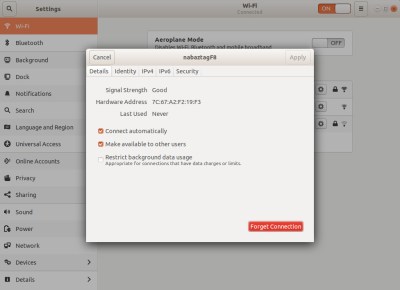In 2020 there is nothing novel or exciting about an online device. Even the most capable models are designed to be unobrusive pucks and smart speakers; their function lies in what they do rather than in how they look. In 2005, an Internet connected device was a rare curiosity, a daring symbol of a new age: the “Internet of Things”!
Our fridges were going to suggest recipes based upon their contents, and very few people had yet thought of the implications of an always-on connected appliance harvesting your data on behalf of a global corporation. Into this arena stepped the Nabaztag (from the Armenian for “rabbit”), an information appliance in the form of a stylised French plastic rabbit that could deliver voice alerts, and indicate status alerts by flashing lights and moving its ears.
Le Premier Lapin Connecté, Ensuite Le Premier Lapin Disconnecté

If this sounds unexpected now, in 2005 it was the darling of the more technically literate chattering classes, hailed as the dawn of a new future in online information and appearing as a piece of art rather than consumer electronics. Quality magazine columnists raved about them, though some spied a glimpse of what future devices would bring in addressing their faults, and for a while an odd anthropomorphic plastic light-up rabbit became an object of desire.
The tale of an IoT startup that gains a lot of traction but fails to create sufficient market is a familiar one to us today, but while the French company Violet who created the Nabaztag were by no means the first in the field to falter they were an early high-profile case of a hardware device being orphaned when its servers left the Internet. Financial troubles led to a sale to the game developer Mindscape, but even that failed to save the device and its servers were turned off in 2011. Since then the remaining Nabaztags have remained alive through the efforts of a hacking community that has grown up around them, with boards such as the Raspberry Pi providing replacement Nabaztag servers.
What’s Beneath That Cute Exterior?
The Nabaztag has always wielded a curious fascination for me as one of the iconic early internet information appliances. They were too expensive for an impulse buy in 2005, but they can now be had for less than a Raspberry Pi 4 via your favourite online auction house. So a couple of years ago I bought a brand new and boxed example, on which I’m now going to perform a teardown. There were three models with varying functionality, mine is the original Nabaztag from 2005.
Out of the box comes a power adapter, instruction leaflet, and the bunny itself. It’s a roughly conical white plastic device about 150 mm (just below 6″) high whose circular base is about 130 mm (5″) in diameter, tapering to around 80 mm (3.25″) at its top. On its front is printed a stylised rabbit face, in the centre at the top is a white plastic button, and either side at its top are mounted a pair of 100 mm (4″) long plastic ears. These are detachable, held on by magnets, and they can be rotated to point anywhere from straight up to out sideways from the body. At the rear bottom is a power jack for the 8 V DC supply, and a three-position volume switch for the internal speaker.
Turning it over, there are a couple of screws holding the base and body together, requiring a tamper-resistant triangular screwdriver. I found a tri-wing driver could unscrew them with a bit of care, and soon had the body apart to reveal the inner workings. Inside is a vertical black plastic chassis with PCB on one side and speakers and ear motors with their small position sensor PCBs on the other, and a series of black plastic light guides protruding from the front of the PCB. Examining the board, all peripheral cables are neatly mounted with sockets at the edge of the board, and all parts save for an L293D motor controller in a DIP package are surface-mount. Of note are the PIC18F6525 microcontroller that forms the brains of the unit, an OKI ML2870A sound chip, and an Atmel AT45DB161B 16 megabit Flash chip.
This is a WiFi enabled device, so I was expecting also to find a screened can on the board containing the WiFi chipset and RF circuitry. Instead I was surprised to find a PCMCIA socket on the reverse side of the PCB, and in it a Benq 801.11B 11 megabit PCMCIA WiFi card. By 2005 these were starting to disappear from laptops as USB and built-in devices took on that role, so it’s an unexpected find. It is especially unusual to see a microcontroller driving this interface, but considering that it had its roots in early-90s portable computing it’s hardly beyond this PIC’s capabilities.
Making Sense Of A Nabaztag In 2020

There are a range of options to get your Nabaztag working in 2020, including the Nabaztaglives Raspberry Pi server, OpenJabNab, and even a ServerlessNabaztag firmware. Of most interest though is the TagTagTag, a Raspberry Pi Zero-based upgrade board produced by the original Nabaztag designers, the second crowdunded production run of which has now been suspended due to COVID-19. Not having a TagTagTag, I set out to connect my Nabaztag to one of the first two options, and that’s where I hit a snag.
Out of the box, the Nabaztag appears to attempt to connect to an open WiFi network, and from there try to reach the now-defunct Nabaztag server. It’s an echo of a more innocent time of 11 megabit wireless networking, when WEP was still considered secure and many networks had no security whatsoever. To connect to a secured network reveals another reminder of times past, powering the device up with the button pressed causes it to set up a peer-to-peer wireless network on which can be accessed a web interface. If you are young enough never to have used peer-to-peer wireless you should consider yourself lucky, because it was unreliable at the best of times and thus a modern device would invariably set up a temporary hotspot to do the same job. Modern devices support peer-to-peer networking, but here was where I drew a blank. I have no device that can connect to my Nabaztag. Several evenings of fruitless tweaking of settings on Linux, Android, and ChromeOS devices left me able to see the network but unable to form a connection with it. Evidently there is some setting that a 2005-era Windows XP laptop would have, but here in 2020 I’m simply unable to make it happen. We’ve all heard of digital obsolescence when it comes to media formats and other files, it’s unexpected to find it in a forgotten section of a protocol that’s very much still part of our everyday life.

So my Nabaztag isn’t much use as it stands, though it makes a pretty desk ornament and a talking point in itself. It’s easy enough to hack its internals and there is part of me that is tempted to put together my own board with probably an ESP32 for brains. I find it fascinating though for what it teaches us about the progression of IoT devices since 2005. A PIC driving a PCMCIA card might seem impossibly quaint to us now, but in 2005 they really were pushing the boundaries of what was possible in an appliance. Today’s equivalent would almost certainly have Linux-capable processor and/or an infinitely cleverer cloud service behind it. It might even have the WiFi electronics on the same die as the core! That we can buy processors that do all this in single quantities for only a dollar or two is a minor miracle, and the Nabaztag is a reminder of how far we’ve come.



















Lekernel might know more about this beast, he wrote some driver for it:
“After working for several small companies – which included developing the Wi-Fi driver infrastructure for the Nabaztag/tag (200000 units sold) – he founded Milkymist Labs in the summer of 2007.”
https://avnode.net/lekernel/
Nice – now do a teardown of TuxDroid!
…please
Quite right: courtesy is a drink at a mountain stream.
Pretty please, with Cherry MX on top?
The TagTagTag upgrade board makes me wish there was something similar for the original leather-wrapped Chumbies. I still have mine, and modified the firmware with a modernish build of OpenSSL (so it can pull data from https sites), but it’s still extremely limited by the hardware. :(
There is an OpenWRT port for the IMX233 (mxs) which runs on the Chumby, I have several of those Olimex boards, if you want to donate one Chumby, I could try to add support for it:
https://downloads.openwrt.org/releases/19.07.3/targets/mxs/generic/
The original prototype Chumbies, and the classic Chumbies (what I have), use an iMX21 instead of the iMX233 the Chumby One uses.
1 – My daughter would love that!
2 – Hmm… 2005
3 – (I read a bit about the technical details) Ok, WEP card? Probably underpowered hardware. Maybe I should just stick a pi in one and give her that. She would still love that shell!
4 – (I glance at the 3d printer over my shoulder)
5 – And that’s how device hacking dies :-(
I never heard of anyone using a PCMCIA card with a microcontroler. I wonder if there was an off the shelf PIC library for PCMCIA that they used. It’s not that I am surprised that it could be done but it must have been a lot of work. Wasn’t USB pretty common already? Did someone actually do all that just to implement a PCMCIA port for this one device?
Or is there maybe an alternate, simpler way to access the card. Perhaps there is an I2C bus or something like that on a couple of those pins. That could explain why they chose the PCMCIA card instead of something USB.
It’s almost 30 years(!) since I worked with pcmcia, but the hardware we were using was well within what would be available as a low to midrange microcontroller today.
USB host might actually been much more complex at the time. There weren’t as many microcontrollers with built-in USB device side at the time, let alone USB host side. And USB stack is quite complex, PCMCIA can actually be pretty simple if you don’t need to support plug’n’play and can hardcode the device type.
Looking at the schematics at https://fccid.io/TYR-NABAZTAG/Schematics/schematics-630159.iframe , many of the address pins are hardwired and the PCMCIA card is wired for 8-bit bus. Which is quite perfect to drive from the 8-bit port D of the PIC18LF6525.
That still leaves the matter of implementing whole 802.11b support and TCP/IP. But that would have been true also with any USB-wireless adapter, as only the later wifi chips such as ESP8266 that target microcontrollers have built-in TCP/IP stacks.
Does anybody have an idea why A7-A9 are tied to A7?
Compare PCMCIA to the ISA bus. That’s the sort of antiquity you’d be dealing with.
There’s a complete one on Ebay for over $3000 + shipping from Vietnam!
Hmmm, has HaD heard from their “Man in Vietnam” lately?
Hah! I saw that too. I wonder how much money you could make on the “inside” of Hackaday by stockpiling old junk before we do a teardown…Sean, if that’s you, we need to have an ethics talk. :)
But searching eBay real quick for Nabaztags turns up a ton of the V2s for like $20 each. Anyone know what the scoop is on them?
This one was about $20 a couple of years ago. They’re still useless, so I can’t see them having a silly value.
That’s not much different than how it was done for decades before the internet. Instead of HaD there were electronics magazines. They paid for article submissions but not enough to live off of. An author would get their hands on a pile of some uncommon chip then design a project around it and submit it to the magazines. At the end of the article would be a blurb with the author’s PO box and how much they wanted for a chip.
At least that’s how it was explained to me, why so many of the projects I read about as a kit required unobtanium.
Jenny,
I’ve sometimes used the tang end of a triangular file to open those “tamper resistant screws” (usually found on a toy from a McDonald’s kids meal).
Ditto. You’ll find that some hex keys will jam in just perfect too.
“It’s just a bleed’n lil bunny!”
– Monty Python’s Holy Grail
These things would definitely be improved by painting some fangs and blood on the bunny face. ;)
Good idea.
I have already got the newer nabaztag tag (the next model up) firmware running on an ESP32 Wroom module. See here: https://github.com/dparnell/esp32-nabaztag One of these days I’ll get around to finishing a board to replace the one in the little guy as the original hardware has trouble getting onto modern networks.
Oh look a slave for the pin output of my PC Engines APU2…
Maybe I will enslave this thing or a Furby and chain it down with a ribbon cable of servitude.
I have 16 Nabaztags running on my home network and csn advise.
just wanted to mention that there is wpa2 encryption now available for nabaztag2: https://www.journaldulapin.com/2018/04/19/tagtag-wpa2/
Together with http://openjabnab.fr/ this works very nice.
And: after latest information the tag:tag:tag will get a new campaign this year as soon as they find the time.
And the campaign started ;-)